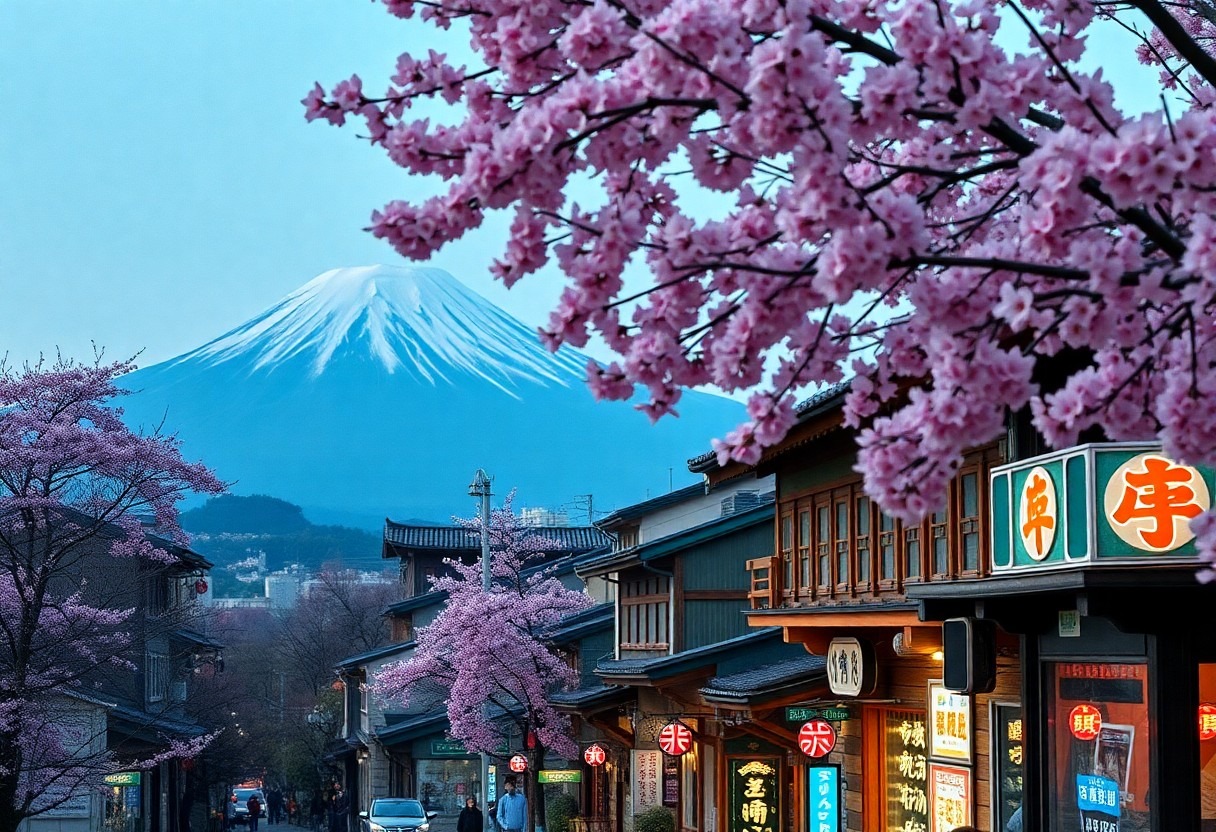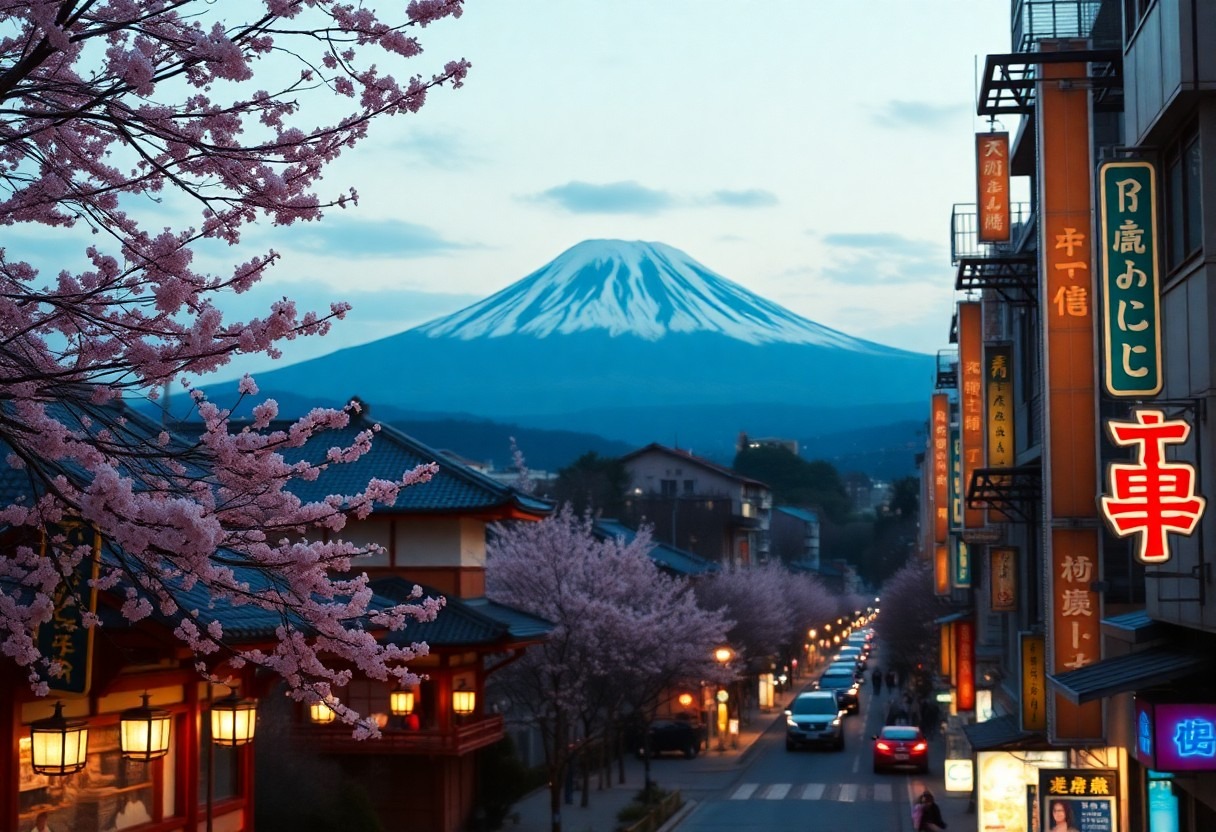As you begin your thrilling adventure in Japan, it’s vital to focus on maximizing every moment of your experience. Japan is a treasure trove of breathtaking sights and engaging activities, making the task of creating the perfect Japan itinerary seem overwhelming. To truly enhance your journey, it is essential to consider your budget and preferred method of transportation. Whether you choose to rent a car or take advantage of Japan’s world-renowned train system, careful pre-planning will ensure a smooth and enriching experience. Don’t forget to allocate sufficient time to discover vibrant cities like Tokyo and Osaka, along with other iconic locations. This complete guide will equip you with everything you need for an unforgettable journey through Japan.
Discover Tailored Japan Itinerary Options Based on Your Unique Interests
When you start planning your adventure in Japan, you’ll find a variety of itinerary styles that cater to your specific interests and timeline. You might consider a 7-day itinerary that takes you from the vibrant streets of Tokyo to the peaceful Japanese Alps, or a 10-day itinerary that explores the culturally rich Kansai region and beyond. Here are two enticing options that you can contemplate:
- 7-day itinerary: This option is perfect for travelers who want to experience the dynamic fusion of Tokyo‘s modern lifestyle and the captivating beauty of the Japanese Alps.
- 10-day itinerary: Ideal for those who wish to dive deep into the historical gems of the Kansai region, featuring highlights such as Osaka, Nara, Kyoto, Kobe, and Hiroshima.
The table below succinctly summarizes the key features of these two itineraries, enabling you to make an informed decision:
| Itinerary | Duration |
|---|---|
| 7-day itinerary | 7 days |
| 10-day itinerary | 10 days |
| Distance covered | 260 mi (7-day), 280 mi (10-day) |
| Highlights | Hot springs, Mount Fuji, snow monkeys (7-day), culinary delights in Osaka, sacred deer, Gion district, and Peace Memorial Park (10-day) |
| Suitable for | City explorers, wellness enthusiasts, nature lovers (7-day), history aficionados (10-day) |
By understanding the different types of Japan itineraries available, you will be empowered to customize your journey according to your personal interests and preferences, ensuring a more fulfilling travel experience.
Embark on a 7-Day Adventure: From Tokyo to Majestic Mountain Landscapes
Japan’s most enchanting experiences await you in the bustling metropolis of Tokyo and the stunning mountain scenery. This 7-day itinerary will guide you through captivating locations such as Hakone, Matsumoto, and Shibu Onsen, where you can relax in rejuvenating hot springs, marvel at breathtaking views, and immerse yourself in authentic Japanese culture. Each destination offers unique experiences that will deepen your appreciation for Japan’s rich heritage and natural beauty.
Experience a 10-Day Exploration: Uncovering Kansai’s Hidden Gems
With this 10-day itinerary, you have the opportunity to explore the lively Kansai region and beyond. This journey includes stops in Osaka, Nara, Kyoto, Kobe, and Hiroshima. It’s particularly suitable for history enthusiasts and those eager to experience the rich cultural fabric of the area. Throughout your travels, indulge in exquisite culinary delights, visit iconic landmarks, and delve into the profound history that shapes Japan’s identity.
This extensive itinerary merges urban life, historical exploration, and cultural encounters, providing you with a well-rounded experience of Japan. If you choose to rent a car, you will enjoy the flexibility to travel between destinations effortlessly, soaking in the picturesque views of the Japanese countryside. Renting a car can enhance your exploration of Japan, enabling you to optimize your adventure while discovering hidden gems along the way.
Crucial Tips for Designing Your Perfect Japan Trip
For anyone planning a journey to Japan, several key factors must be considered to ensure a rewarding experience. When outlining your trip, it is essential to assess your budget, the transportation mode that best fits your needs, and the season in which you plan to visit. Here are some foundational tips to help you get started on your planning journey:
- Craft your itinerary based on your interests and the destinations you wish to explore during your visit.
- Identify the optimal mode of transport for your journey, whether it involves car rental, train travel, or flying.
- Select the ideal time to visit Japan in alignment with your budget and personal preferences.
By recognizing the importance of meticulous planning, you can pave the way for a smooth and enjoyable trip to Japan, allowing you to make the most of your time in this beautiful country.
Your Gateway to Adventure: Flying to Japan
To embark on your journey to Japan, you can conveniently fly into one of the country’s major international airports, such as Haneda or Narita in Tokyo, or Kansai in Osaka. The cost of a direct flight from London to Tokyo averages around £918. For the best flight deals, consider utilizing a flight comparison tool like KAYAK, which can help you find the most affordable options and save you money on your travel expenses.
Selecting the Best Transportation for Your Japan Exploration
If you’re excited to discover Japan’s diverse landscapes and vibrant cities, choosing the most convenient mode of transportation is crucial. Most itineraries can be accomplished via car rental, train, air travel, or a combination of these options. Your budget and the number of travelers in your group will significantly influence the best transportation choice for your needs.
Additionally, when considering your transportation options, evaluate the distance you plan to cover and the amount of time you have available. If your itinerary involves multiple cities, a car rental might be the most practical choice, giving you the freedom to travel at your own pace while exploring rural areas. However, if driving isn’t your preferred option, Japan’s train system is celebrated for its efficiency and reliability, making it an excellent alternative for travelers.
Determining the Optimal Timing for Your Japan Itinerary
With an abundance of experiences awaiting you in Japan, the ideal time for your visit largely depends on your preferences and budget. Data indicates that October is the most popular month for travel to Japan, closely followed by March and April, famous for the stunning Sakura season. If you’re comfortable with warmer temperatures and humidity, August may offer lower costs and smaller crowds, making it a feasible option for budget-conscious travelers.
For instance, if you wish to witness Japan’s enchanting cherry blossoms, plan your travel for March or April. However, this period is incredibly popular, leading to increased prices for accommodations and flights. Conversely, if you prefer milder weather and more affordable options, consider visiting during the spring or autumn seasons, when the weather is typically pleasant and ideal for exploration.

Step-by-Step Guide to Crafting Your Perfect Japan Itinerary
Your adventure in Japan can transform into a dream experience with the right planning and organization. We’ve compiled a comprehensive step-by-step guide to assist you in creating the ideal Japan itinerary tailored to your specific desires and preferences.
Below is a structured breakdown of the essential steps to formulate your perfect Japan itinerary:
| Step | Description |
|---|---|
| 1. Establish Your Budget | Determine your overall expenses for your Japan trip, accounting for flights, accommodations, meals, and activities to ensure you stay within your financial means. |
| 2. Select Your Destinations | Identify the specific places you wish to visit in Japan, such as Tokyo, Osaka, Kyoto, and Hiroshima, to create a focused itinerary. |
| 3. Secure Your Accommodation and Transportation | Book your lodgings, whether hotels, ryokans, or hostels, and arrange for your transportation, including trains, flights, or car rental, to ensure a smooth travel experience. |
Step 1: Establishing Your Budget for a Memorable Journey
In the planning process for your Japan adventure, it’s crucial to set a clear and realistic budget. Take into account all expenses, such as flights, lodging, meals, activities, and any additional costs that may arise. For reference, the average nightly rate for a double room in Tokyo is approximately £131, while the standard cost of a rental car in the city is about £66 per day, allowing for effective financial planning throughout your trip.
Step 2: Choosing Your Destinations for a Comprehensive Experience
During your travels, you can uncover a plethora of incredible destinations, including Tokyo, Osaka, Kyoto, and Hiroshima. Select locations based on your personal interests, whether they relate to history, gastronomy, or nature exploration. It’s also important to consider the travel time and distance between destinations. For example, the journey from Tokyo to Osaka spans roughly 280 miles and takes around 5 hours by train or car, so plan accordingly to make the most of your trip.
Step 3: Booking Your Accommodation and Securing Transportation
To ensure your travel arrangements are seamless, follow the steps to book your accommodation and transportation. You can choose from a variety of lodging options, including hotels, ryokans, or hostels, while also organizing your transportation choices, such as trains, planes, or car rental. It’s highly recommended to secure your lodging and transport ahead of time to avoid inflated prices and potential issues with availability during peak travel seasons.
Your accommodation options in Japan range from budget-friendly hostels to luxurious hotels and traditional ryokans, catering to a variety of preferences. Additionally, consider renting a car to navigate Japan’s beautiful countryside. With thorough planning and foresight, your upcoming trip to Japan can be a remarkable success, filled with unforgettable experiences and memories.

Essential Considerations for Planning Your Japan Adventure
Amid the excitement of traveling to Japan, several factors must be kept in mind to ensure a smooth and enjoyable experience. When arranging your trip, it’s essential to reflect on transportation, budget, and accommodation. Here are several crucial considerations to guide your planning:
- Mode of transport: Decide whether to travel by car, train, or plane, based on your budget and travel preferences.
- Budget: Anticipate daily expenses, which will vary depending on your choice of accommodation, meals, and activities you wish to enjoy.
- Accommodation: Choose from hotels, hostels, or ryokans based on your budget and personal taste, ensuring that you have a comfortable place to stay during your travels.
The cornerstone of a successful trip lies in careful planning and thorough research of your options, enabling you to make informed decisions that enhance your overall experience.
Understanding the Average Budget Required for a Trip to Japan
Your overall budget for a trip to Japan will significantly depend on your travel preferences and the current exchange rates. The average cost for a double room in Tokyo stands at £131 per night, while a bed in a hostel is priced at £51 per night. If you plan to rent a car, expect an average daily cost of £66, which will help you budget effectively for your travel needs.
Road Conditions and Essential Driving Tips for Japan
Japan’s well-maintained roadways provide an excellent opportunity for exploration by car. However, it’s important to familiarize yourself with the left-hand traffic system and obtain an <a href=”https://rentacar24.org/tips-for-driving-a-rental-car-out-of-state/”>International Driving Permit</a> to drive legally in the country. Understanding the driving conditions and regulations in Japan is crucial for a safe and enjoyable experience. Additional information can be found on the Japanese Automobile Federation website, which can serve as a valuable resource for travelers. It’s also wise to consider the cost of tolls, which may be significant, as well as the type of vehicle you choose to rent, as this can affect your fuel expenses and overall travel budget.
Weather Patterns and Climate Considerations for Traveling in Japan
Even with meticulous planning, the weather in Japan can be unpredictable. The country experiences a temperate climate characterized by four distinct seasons, with weather conditions varying significantly by region. Japan’s climate ranges from subtropical in the southern regions to temperate in the north. The optimal times to visit Japan are during spring or autumn, when the weather is typically mild and pleasant, perfect for sightseeing and outdoor activities. However, for a unique experience, consider timing your visit to coincide with the cherry blossom season in March and April, or plan for the winter months to enjoy skiing and relaxing in hot springs.
Assessing the Pros and Cons of Various Transportation Options in Japan
In the context of planning your trip to Japan, it’s essential to evaluate the advantages and disadvantages associated with different modes of transportation. The following table provides an overview of the primary pros and cons of each option:
| Transportation Mode | Pros and Cons |
|---|---|
| Train | Convenient, efficient, and boasts an extensive network; however, it can be costly for long distances |
| Car Rental | Offers flexibility and the freedom to explore but necessitates an International Driving Permit and can be pricey |
| Flight | Fast and convenient for long distances but may be costly and has limited flight paths between cities |
| Bus | Affordable and covers numerous routes, but can be time-intensive and less convenient for longer journeys |
| Subway | Efficient and great for city travel, though it can be crowded and confusing for newcomers unfamiliar with the system |
As demonstrated, each transportation mode presents its own set of advantages and challenges. Consider your budget, travel style, and intended destinations when deciding on the best transportation for your needs, ensuring that you maximize your time and enjoyment during your stay in Japan.
Evaluating the Advantages and Disadvantages of Renting a Car in Japan
Renting a car in Japan can significantly enhance your travel experience, offering you the freedom to explore at your own pace. However, it’s crucial to weigh the associated pros and cons. The table below summarizes the key advantages and disadvantages of this option:
| Pros | Cons |
|---|---|
| Flexibility and freedom to explore at your own pace | Requires an International Driving Permit to drive legally |
| Can be cost-effective for groups or long-distance travel | Can be expensive for solo travelers or short trips, impacting your overall budget |
| Allows for scenic routes and exploration of rural areas | May necessitate additional insurance and incur toll costs, adding to your travel expenses |
Analyzing the Benefits and Drawbacks of Using the Japan Railpass
| Pros | Cons |
|---|---|
| Convenient and efficient mode of travel across regions | Can be expensive, particularly for shorter distances |
| Covers a wide range of routes and trains, enhancing travel options | May not be cost-effective for solo travelers or limited journeys unless planned properly |
| Facilitates scenic routes and rural exploration, enriching your travel experience | Requires prior planning and research to maximize value and avoid unnecessary costs |
The Japan Railpass can be a cost-effective solution for travelers planning to cover long distances or visit multiple cities. However, it’s important to analyze costs and compare them against purchasing individual train tickets to ensure the best value for your journey. Additionally, while the Japan Railpass offers convenient and efficient travel, it’s essential to plan ahead and research the routes and trains included to optimize its benefits during your travels.
Assessing the Advantages and Disadvantages of Air Travel in Japan
When considering air travel, it’s essential to weigh the pros and cons carefully and explore alternative transportation methods. Air travel can be a fast and efficient way to cover long distances, but it may come with higher costs and limited routes, which could affect your travel plans.
In summary, each transportation option in Japan presents its own advantages and disadvantages. By factoring in your budget, travel style, and desired destinations, you can select the best mode of transportation for your trip, ensuring that you maximize your time and enjoyment while exploring Japan. Always conduct thorough research and plan ahead to facilitate a smooth and enjoyable journey filled with unforgettable experiences.

Detailed Itinerary Breakdown for 7-Day and 10-Day Adventures
To ensure that you fully enjoy your time in Japan, careful itinerary planning is essential. Below is a detailed overview of what you can expect during both 7-day and 10-day trips, highlighting the unique experiences each day has to offer.
7-Day Itinerary: Daily Highlights and Activities to Experience
Throughout your week, you’ll engage in daily adventures as you explore Tokyo, Hakone, Matsumoto, and Shibu Onsen. Experience rejuvenating hot springs, breathtaking views of Mount Fuji, and the captivating beauty of the Japanese Alps. Each day will be packed with activities, from sightseeing in urban hubs to relaxing in nature’s embrace, ensuring a balanced and fulfilling experience.
10-Day Itinerary: Daily Highlights and Activities for a Deeper Dive
To truly immerse yourself in the Kansai region, you’ll spend 10 days discovering Osaka


